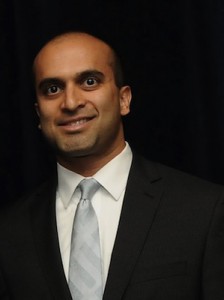 |
Adi Divgi, a speaker at the marcus evans Elite Summit 2014, on how family offices can incorporate institutional best practices towards alternative investments in their own portfolios to attempt to replicate the success that such institutional funds have had. Interview with: Adi Divgi, President, EA Global |
FOR IMMEDIATE RELEASE
“If family offices act in aggregate to create “commingled separate accounts” in which their assets are bundled with assets of other like-minded family offices, they could have the potential ability to act like larger institutions and create strategic partnerships with best of breed managers,” proposes Adi Divgi, President of EA Global. Such family offices, he adds, could effectively replicate what he successfully did at a multibillion dollar North American plan sponsor until this past April for an allocation of USD 7.5 billion to opportunistic credit.
Mr. Divgi, a speaker at the marcus evans Elite Summit 2014, taking place in Montreux, Switzerland, 16 – 18 June, shares his unique perspective on investing, as a manager who has worn both the institutional and private wealth management “hats”.
What could private wealth managers learn from your experiences at the multibillion dollar North American plan sponsor?
Mr. Divgi created the first and only fund of one investment platform in alternatives at the plan sponsor, in which the sponsor acted as the sole limited partner. It created customised accounts with best of breed investment managers, incorporating best practices on market trends, valuation, pricing, administration, and policies that Mr. Divgi learned from thought leaders in the investment and infrastructure space.
Given the size of the plan sponsor’s fund, Mr. Divgi executed tickets that ranged from USD 250 to USD 600 million, allowing the sponsor to drive the conversation with managers and align interests as much as possible. Most family offices cannot write checks north of USD 50 million. “Bundling” would enable like-minded family offices to pool their assets to create a “commingled separate account”. Combining this structure with the institutional best practices that Mr. Divgi implemented at the plan sponsor would enable these families potentially to replicate the success that the plan sponsor had in generating compelling returns in this alternative investment platform (15% net annualised since inception IRR as of 31 December 2013, with inception on 15 December 2011). It is critical that these families hire an advisor who has had success negotiating with managers, executing the investment strategy, and developing the corresponding infrastructure.
What asset types would this structure best accommodate?
It can accommodate both short- and long-duration assets, from less than one-year paper on one end to private credit and direct lending to mid-market companies on the other. Families should know in advance that this structure does not accommodate periodic liquidity (e.g. on a monthly or quarterly basis), but rather is similar to a drawdown structure with an investment period in which the capital commitment is locked up over a certain number of years.
Banks have typically dominated the private credit area, especially in Europe. Due to increased scrutiny and regulation, they can no longer lend in the same volume. As a result, many companies are starved of capital. Institutional capital can effectively replace banks as lenders of last resort. This vehicle could effectively do that either by providing a manager with capital as a limited partner or by investing directly in assets that would be managed internally post-execution. Again, it is absolutely critical that the families interested in developing this structure and platform hire a leader with success in executing such a mandate at the institutional level.
If this concept was successful at the plan sponsor, does it mean the platform would also work in any family office?
Although there are many reasons why this platform was successful at the plan sponsor, the platform itself may not necessarily be appropriate for every family office. However, there are institutional best practices that families could incorporate in their own portfolios of alternatives to enable them potentially to replicate the plan sponsor’s success to a significant degree.
Original title: Elite Summit 2014: Adi Divgi News Release, Source: PRESS-OFFICER, 2014/05/14, MARCUS EVANS Press

